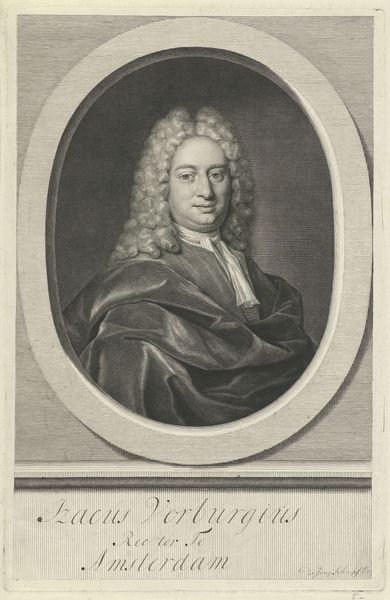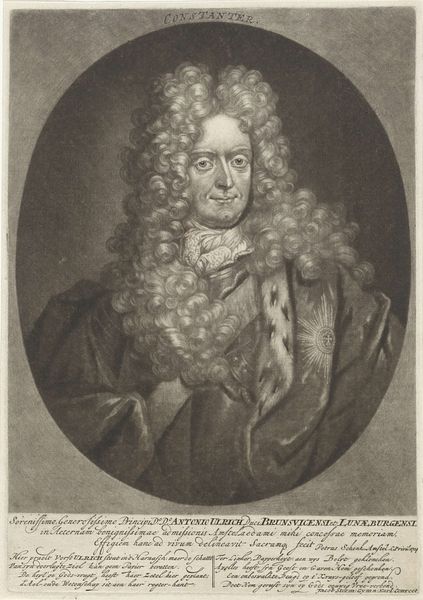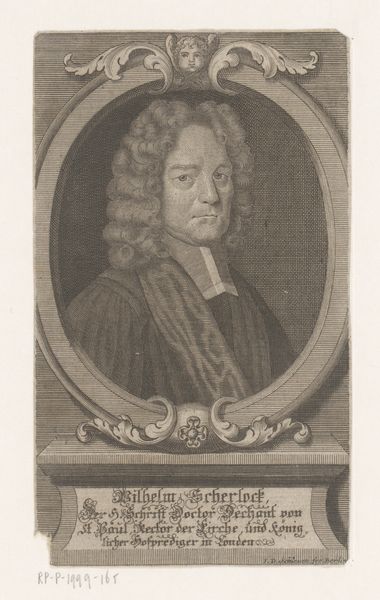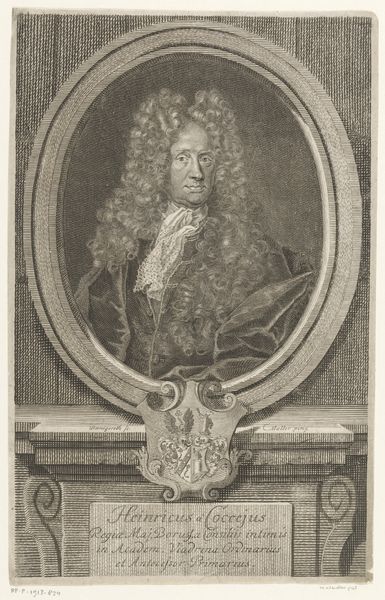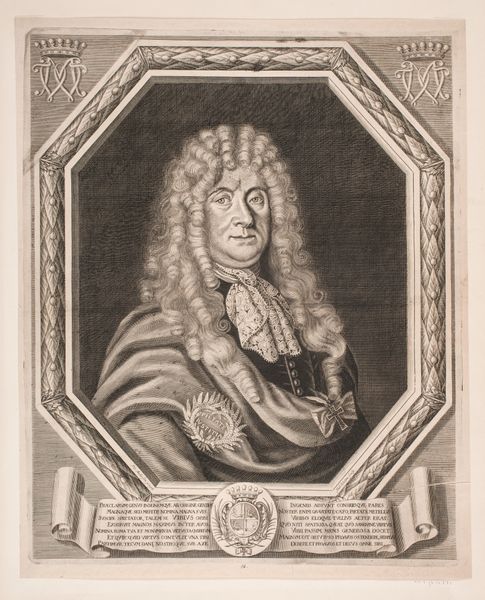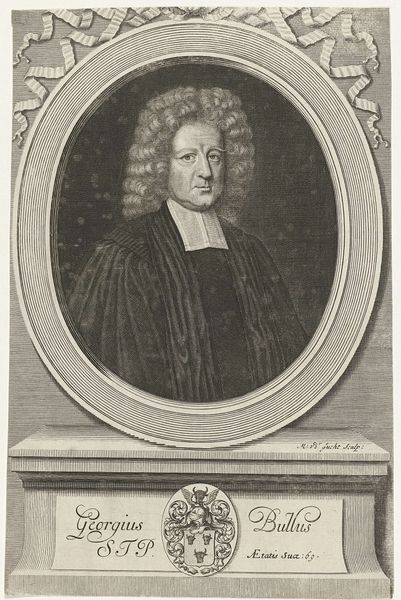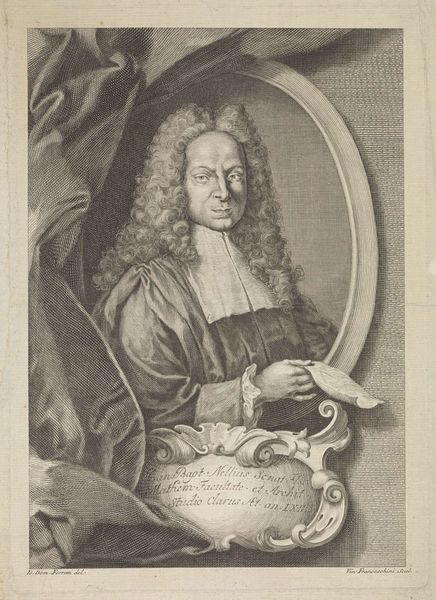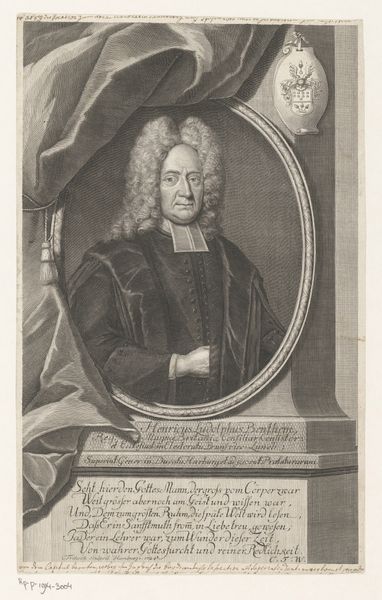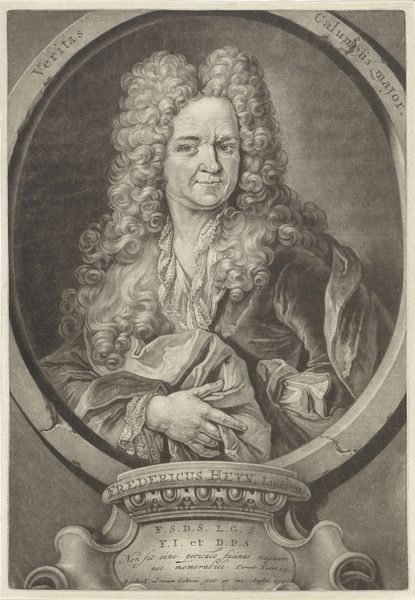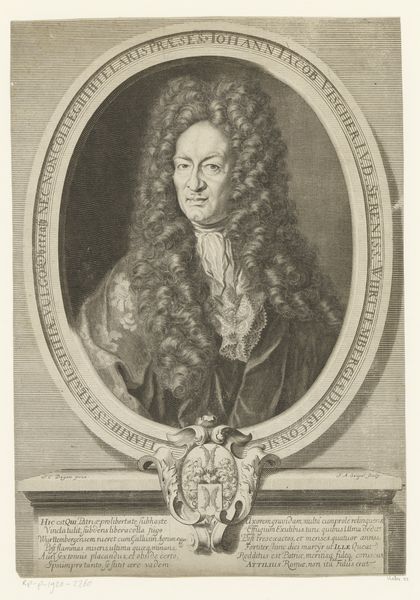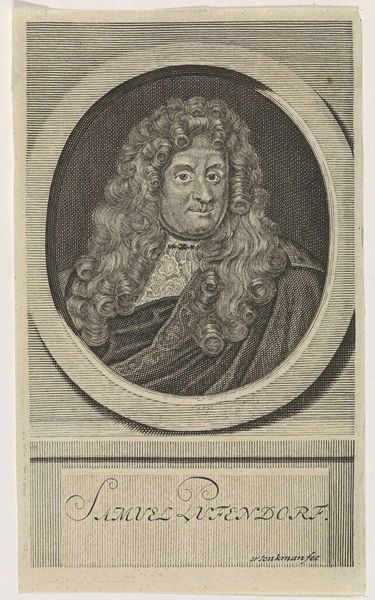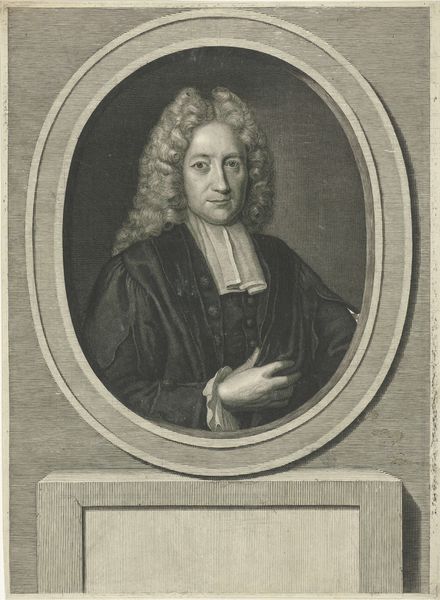
print, engraving
#
portrait
#
baroque
# print
#
history-painting
#
engraving
Dimensions: height 246 mm, width 182 mm
Copyright: Rijks Museum: Open Domain
Curator: Here at the Rijksmuseum, we have "Portret van Bernard Nieuwentijt" an engraving dating sometime between 1674 and 1731, created by Pieter van Gunst. What are your initial impressions? Editor: Overwhelming! The wig is the clear focal point, of course, but also this feels like a carefully constructed performance of power, doesn't it? Curator: Indeed. The composition directs our eyes meticulously, guided by the intricate network of lines forming Nieuwentijt's luxurious wig and velvet coat. Observe the precision of the engraving technique, creating gradations in tone to model the figure. Editor: And how does that material grandeur intersect with societal structures of the time? These displays of wealth weren't accidental; they signified privilege at a time when access to resources was drastically uneven. Curator: Certainly, but let's consider how the engraving also monumentalizes Nieuwentijt as an intellectual figure, given that he was a mathematician, philosopher, and physician. It creates an enduring image of him using calculated strokes and precise lines. Editor: Precisely. By examining the choices embedded in portraiture itself, like the way class is constructed or what modes of display are valued, we are really diving into a cultural moment. What are its politics of representation? Whose stories get told? Curator: Ultimately, this piece offers both a meticulous study of form and an engagement with broader issues of identity and representation in 18th-century Dutch society. Editor: Absolutely. Seeing it helps us to interrogate how societal power structures inform seemingly simple artworks. Curator: Yes, art encourages new perspectives every time. Editor: Agreed. It has certainly changed the way I consider portraiture, altogether.
Comments
No comments
Be the first to comment and join the conversation on the ultimate creative platform.
